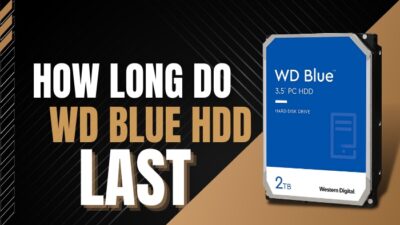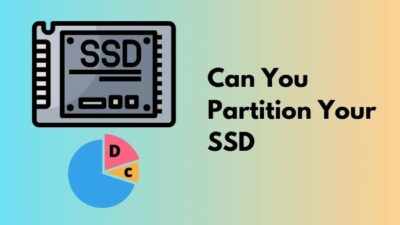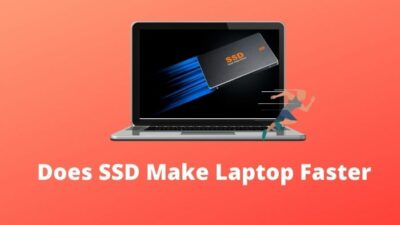SSDs are the future of storage due to their reliability and compactness. If you know anything about computers, you probably have come across SSD and its remarkable performance in speed.
If you want to update your system or upgrade from HDD to an SSD, you will feel the pressure of the high price of SSDs, differing from other PC components.
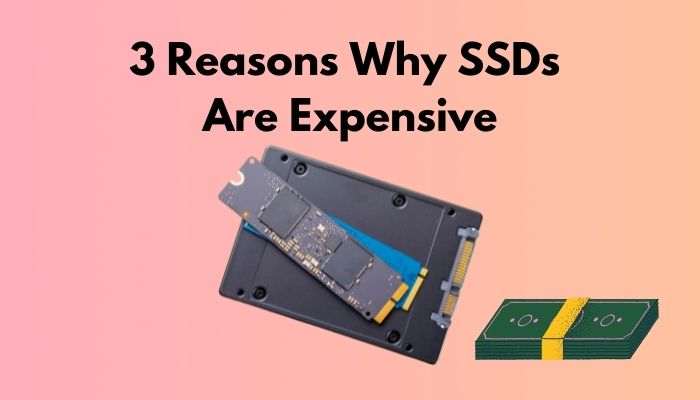
That’s when the burning question arrives; it’s been quite a long since SSDs have appeared in the market. But why are they still so expensive?
After hours of researching, going through blogs, articles, and insights from manufacturers, we came to find out the three main reasons behind it are Newer Technology, and manufacturing process is still new, faster performance, and less power consumption.
But before we move into further discussion, there are fundamental factors we have to know about SSDs.
What is an SSD?
Solid State Drive is the new generation of storage devices used in computers. SSD’s are much faster than your daily traditional mechanical hard disk. It works as a simple USB flash drive but is a much more complex and more significant device that accumulates tons of NAND flash storage.
Unlike HDD (Hard Disk Drive), SSDs don’t possess moving parts or spinning disks. To deliver higher speed, even from HDD, SSD controller manages & uses interconnected pools of flash memory to provide speed beyond the offerings of HDD.
The WOW’s of SSD!
HDD write speeds range between 50-120Mbit/sec, compared to 200-500Mbit/sec of SSD. Meaning that SSD reduces boot time to approx. Ten seconds (in cases much faster) than 35-40 seconds in an HDD.
Boot your operating system on your SSD, click on the power button, and boom, the system has already been opened within 5-10 seconds. You won’t even have the chance to grab some snacks in between.
Also check our exclusive tutorial on can SSD Improve FPS.
Types of SSD – Explained
When you decide to go for SSD as the storage device for your setup, you need to consider the speed, readability, and power usage of the SSD. SSD is an extra storage unit using flash memory to store data inside it. It is several times faster than your average HDD in terms of reading and writing data.
As you will notice a reduction in your boot time and application loading time, it will feel much smoother.
There are two types of SSD – SATA & Peripheral Component Interconnect Express or Non-Volatile Memory Express (PCIe/NVMe/PCIe-NVMe).
1. SERIAL ADVANCED TECHNOLOGY ATTACHMENT SSDs (SATA)
SATA is the slower one between the two types of SSD because it uses the same interface similar to Hard Disk Drives. Despite being the slowest grade in its criteria, it will still boost your system’s speed four to five times than any HDD would.
The most common type is the 2.5inch SATA SSD, and it can be used in older generation computers as a separate unit of storage.
The maximum speed is set at 6Gbps / 600Mbps, and the average is at 500-500Mbps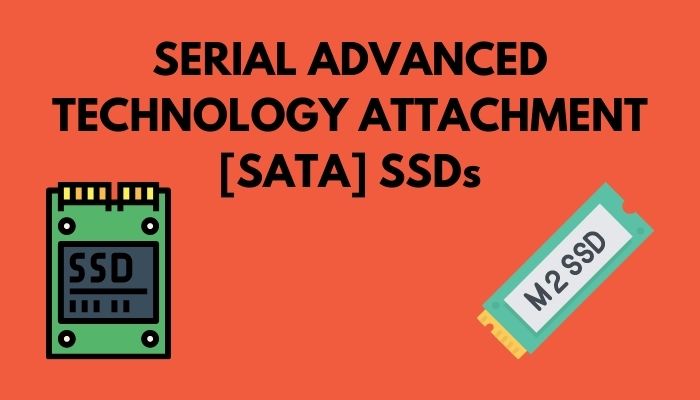
MINI-SATA SSDs
Mini SATA or mSATA is the younger brother, smaller SATA SSDs. They are mainly used in smaller devices such as phones, tablets, or very thing laptops and notebooks. They are smaller but have the same specs as a 2.5inch SATA SSD.
Check out our separate post on SSD good for Gaming.
M.2 SSDs
M.2 SSDs are ram-like edition SSDs for your device. It is a rectangular stick looking very similar to a RAM stick, commonly used in mobile devices or slims laptops.
Computers also support M.2 SSDs, but your motherboard has to have the designated slot for it, which can only be found in newer generation boards and a few previous generations too.
Don’t be fooled by their size. M.2 SSDs can store up to 2TB (terabytes) of data. There are also 1TB/512GB/256GB/128GB/120GB editions of it.
You will notice numbers which are M.2 SSD – 2242, 2260, 2280, 22110. These indicate its size in length and width. Example, an M.2 2260 means 22mm (length) X 60mm (width).
2. PERIPHERAL COMPONENT INTERCONNECT EXPRESS SSDS (PCI-E)
PCIe SSDs are three to four times faster than normal SATA SSDs, as it has more bandwidth, meaning it is the fastest type of SSD in the market.
PCIe SSDs are high-speed interface and performance expansion cards installed in the motherboard. It works along well with graphics cards and sound cards. These cards are expensive than SATA SSDs for performance, not for more storage capacity.
NON-VOLATILE MEMORY EXPRESS SSDs (NVMe)
These are new generation SSDs that possess the fastest response time and best performance.
NVMe can transfer data at a high speed, around 3000-3500 Mbps/ 3-3.5Gbps. Meaning it will take 15 seconds or less to transfer a 30GB file to your computer.
But why is SSD so expensive?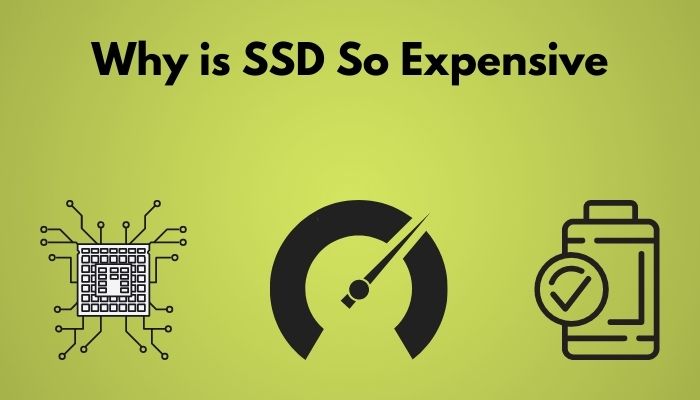
There are very few obvious facts why SSDs are expensive, apart from that there are also a few industry insights that will enlighten you further on. Which are:
1. It’s a new technology
Due to being a new technology of NAND flash memory, most people still do not have access to it yet. Flash memory is faster than the mechanical arm in hard drives.
As it is not widely reachable to mass consumers, the development of the technology and manufacturing needs to be paid for, by the customer it is accessible to.
Therefore, the price of SSD is going to stay high for the time being, unless costs of production don’t go down.
But before that, go through our epic guide on can SSD cause Blue Screen.
2. Faster Performance
In relevance to the quote “Time is money”, now we can say “Speed is money”. As SSDs are three to five times faster than HDDs, it provides convenience in the form of speed. It cut downs loading time which can be very bothersome for different applications and games.
As convenience is provided through speed, convenience will cost you.
3. Less Power Consumption
Hard Disk Drives (HDD) are made of a spinning disk with coated magnetic material, an actuator arm with a reading head that floats above the disk and rotates around to the different parts of the disk. It reads and records the data. This whole process is power-consuming.
But SSDs use NAND flash, a non-volatile storage type that has fewer moving parts and processes at higher speed rates, leaving less strain on the battery, which consumes less power than the HDD consumes to store data. This is likely to increase the price.
Here’s a complete guide on can you Partition your SSD.
Conclusion
Let us remember that, when the first HDD arrived in the market, it was the size of a room, required an A/C to cool it off & required a dollar less than the national debt. All that for a few megabytes. But look where we are right now.
With time, the same will happen for SSD. Despite such high prices for lower capacity, we are already getting more for $100 than the previous years. So the price for SSD will also come in a price-savvy state where it will be largely available to a wide range of customers.
If you have any thoughts, please feel free to comment below.

